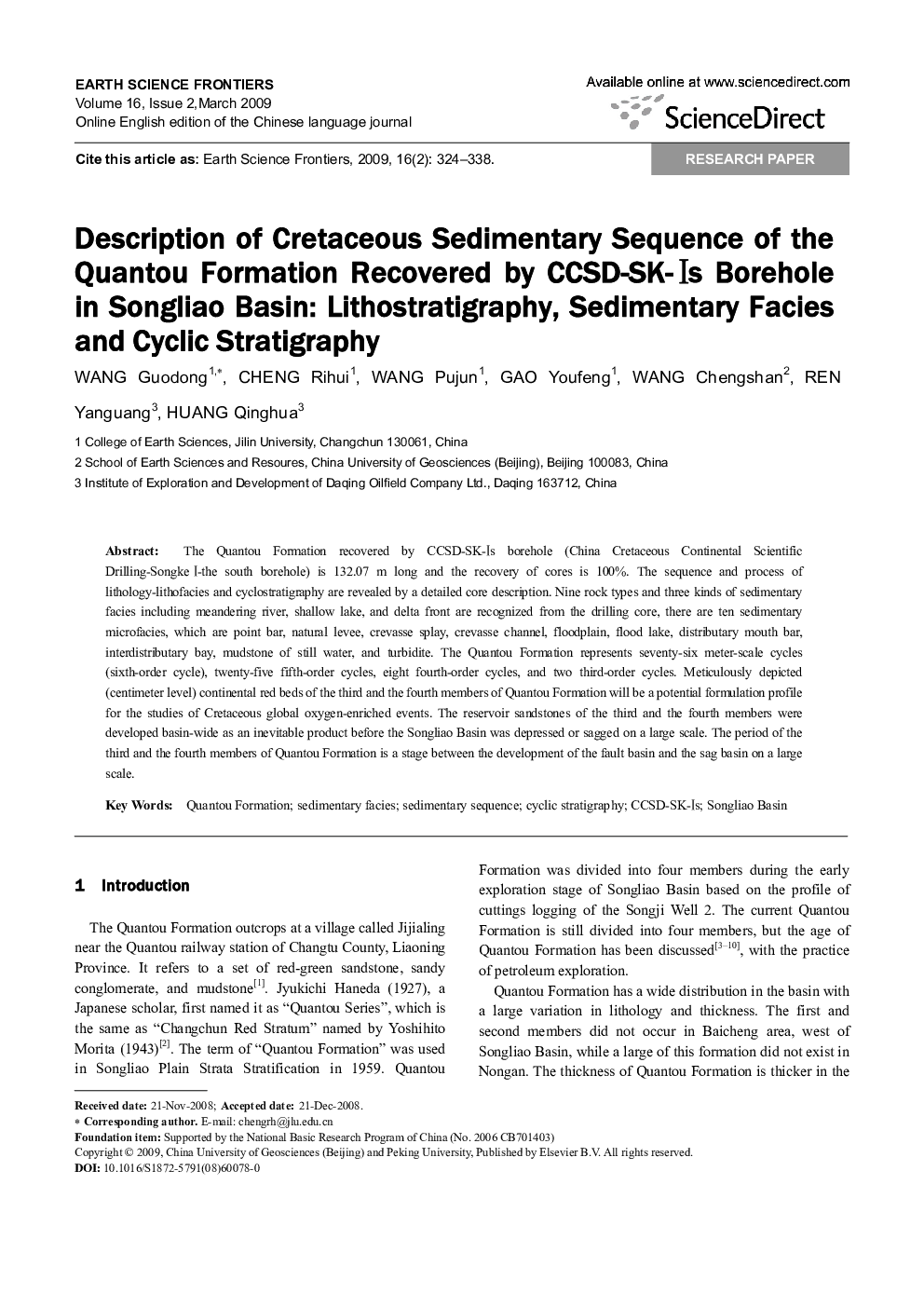| کد مقاله | کد نشریه | سال انتشار | مقاله انگلیسی | نسخه تمام متن |
|---|---|---|---|---|
| 4701552 | 1352714 | 2009 | 15 صفحه PDF | دانلود رایگان |

The Quantou Formation recovered by CCSD-SK-Is borehole (China Cretaceous Continental Scientific Drilling-SongkeI-the south borehole) is 132.07 m long and the recovery of cores is 100%. The sequence and process of lithology-lithofacies and cyclostratigraphy are revealed by a detailed core description. Nine rock types and three kinds of sedimentary facies including meandering river, shallow lake, and delta front are recognized from the drilling core, there are ten sedimentary microfacies, which are point bar, natural levee, crevasse splay, crevasse channel, floodplain, flood lake, distributary mouth bar, interdistributary bay, mudstone of still water, and turbidite. The Quantou Formation represents seventy-six meter-scale cycles (sixth-order cycle), twenty-five fifth-order cycles, eight fourth-order cycles, and two third-order cycles. Meticulously depicted (centimeter level) continental red beds of the third and the fourth members of Quantou Formation will be a potential formulation profile for the studies of Cretaceous global oxygen-enriched events. The reservoir sandstones of the third and the fourth members were developed basin-wide as an inevitable product before the Songliao Basin was depressed or sagged on a large scale. The period of the third and the fourth members of Quantou Formation is a stage between the development of the fault basin and the sag basin on a large scale.
Journal: Earth Science Frontiers - Volume 16, Issue 2, March 2009, Pages 324-338